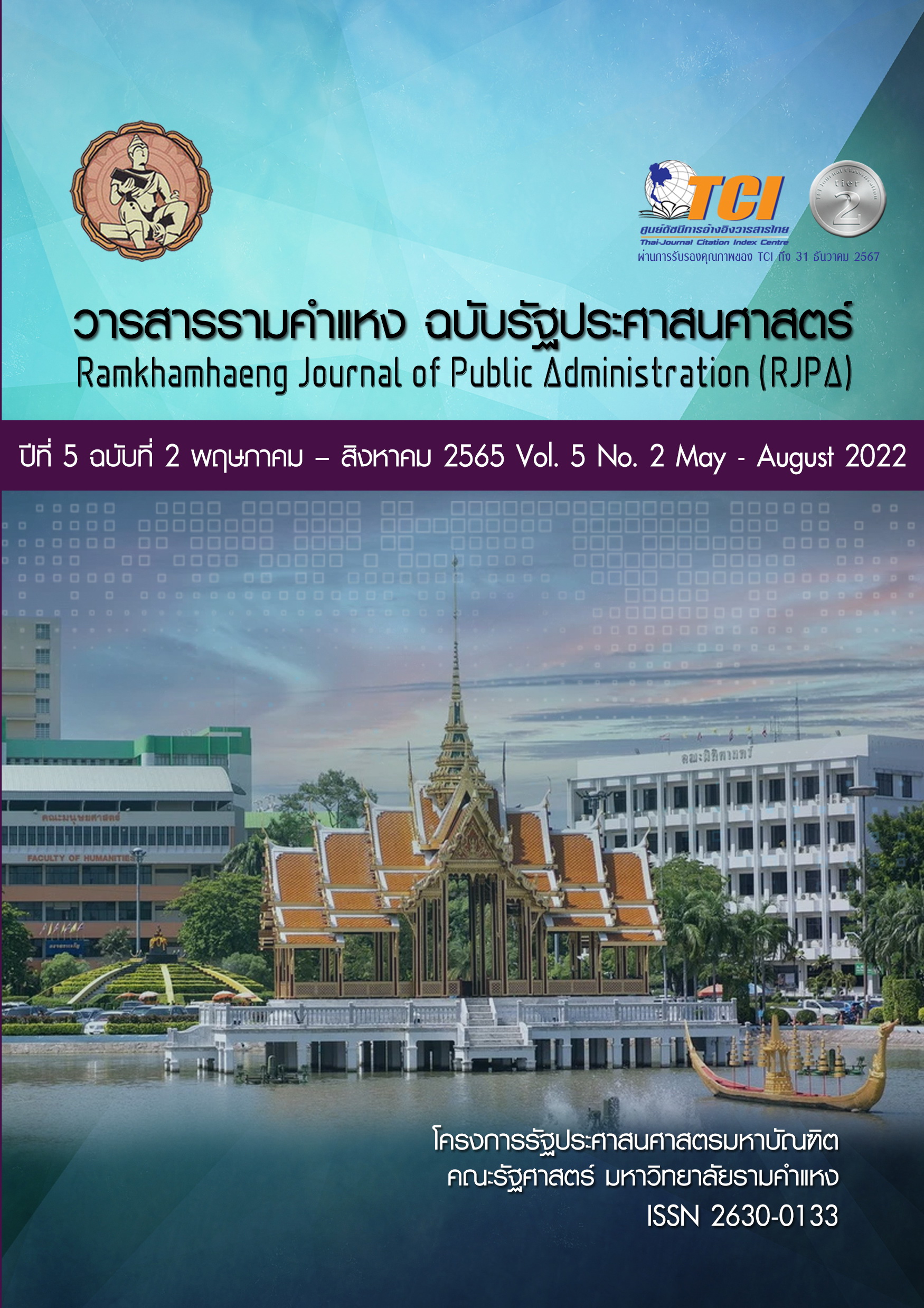Proactive strategy for the administration efficiency development of provincial administrative organizations
Keywords:
proactive strategy, the administration efficiency development, provincial administrative organizationsAbstract
In this dissertation, the researcher examines the models for the use of proactive strategy for the administration efficiency development of provincial administrative organizations (PAOs). The data collection tool was a statistical questionnaire which consisted of descriptive statistics, number, percentage, mean and standard deviation. Inferential statistics include multiple regression analysis are included. This paper used mix method i.e., document research and field research. Also, a semi-structured interview by interviewing 6 key informants was employed as a means to collect data.
Findings show that the model of proactive strategy that PAOs have used in each region is mixed proactive strategy between performance-based management, process-based management or an efficient work system and quality human resource development-based management. Each PAO throughout the country does not differ in the models. In other words, the mixed proactive strategy is used in all regions. Differences are in the details of each region in accordance with the culture of each locality.
The efficient administration of PAOs must employ knowledge, abilities and various skills i.e., participative administration and legal knowledge. This is because there are rules, regulations, and related announcements by the bureaucracy. The administration must be in accordance with these regulations. The guidelines for administration efficiency development must commence from the establishment of the systems and mechanisms for administration. Strategies must be clearly formulated with philosophy, vision, mission, objectives, and work plans. Personnel must be developed to be equipped with abilities in consonance with the work to execute. Technology must be used in work in a worthy manner. The evaluation results must be used to improve the policy and work plans as well as in all aspects of operation.
References
ชำนาญ อรุณพงษ์. (2543). ปัญหาการปฏิบัติงานตามกรอบอัตรากำลังขององค์กรปกครองส่วนท้องถิ่น. วิทยานิพนธ์รัฐศาสตรมหาบัณฑิต มหาวิทยาลัยรามคำแหง.
ธเนศวร์ เจริญเมือง. (2545). 100 ปีการปกครองท้องถิ่นไทย. กรุงเทพมหานคร: โครงการจัดพิมพ์คบไฟ.
ธงชัย สันติวงษ์. (2541). ทฤษฏีองค์การและการออกแบบองค์การ. กรุงเทพฯ: สำนักพิมพ์ไทยวัฒนาพานิช.
ธันยวัฒน์ รัตนสัค. (2555). การบริหารราชการไทย. เชียงใหม่: มหาวิทยาลัยเชียงใหม่, คณะรัฐศาสตร์และรัฐประศาสนศาสตร์.
วิรัตน์ ศรีประสิทธิ์. (2544). ทิศทางการพัฒนาการกระจายอำนาจการปกครองเพื่อแก้ไขปัญหาให้กับองค์กรปกครองส่วนท้องถิ่นในอนาคต.วิทยานิพนธ์รัฐศาสตรมหาบัณฑิต มหาวิทยาลัยรามคำแหง.
วันชัย ดนัยโมนุท และไกร เกษทัน. (2543). ประมวลสาระเรื่องการกระจายอำนาจการบริหารการศึกษา. กรุงเทพฯ : กรมการศาสนา.
ศิริพงษ์ วัชรหงษ์. (2543). ปัญหาการกระจายอำนาจการปกครองท้องถิ่นตามนโยบายของรัฐบาล. วิทยานิพนธ์รัฐศาสตรมหาบัณฑิต มหาวิทยาลัยรามคำแหง.
สุวัฒน์ อรุณสิทธิกร. (2543). แนวทางการพัฒนาเพื่อแก้ปัญหาการกระจายอำนาจสู่องค์กรปกครองส่วนท้องถิ่นในเขตพื้นที่ภาคเหนือตอนบน.วิทยานิพนธ์รัฐศาสตรมหาบัณฑิต มหาวิทยาลัยรามคำแหง.
Robbins, H. (1985). Asymptotically efficient adaptive allocation rules. Advances in Applied Mathematics, 6(1), 4-22.
Downloads
Published
How to Cite
Issue
Section
Categories
License
Copyright (c) 2025 สรศักดิ์ สร้อยสนธิ์, สุรพล ราชภัณฑารักษ์

This work is licensed under a Creative Commons Attribution-NonCommercial-NoDerivatives 4.0 International License.



